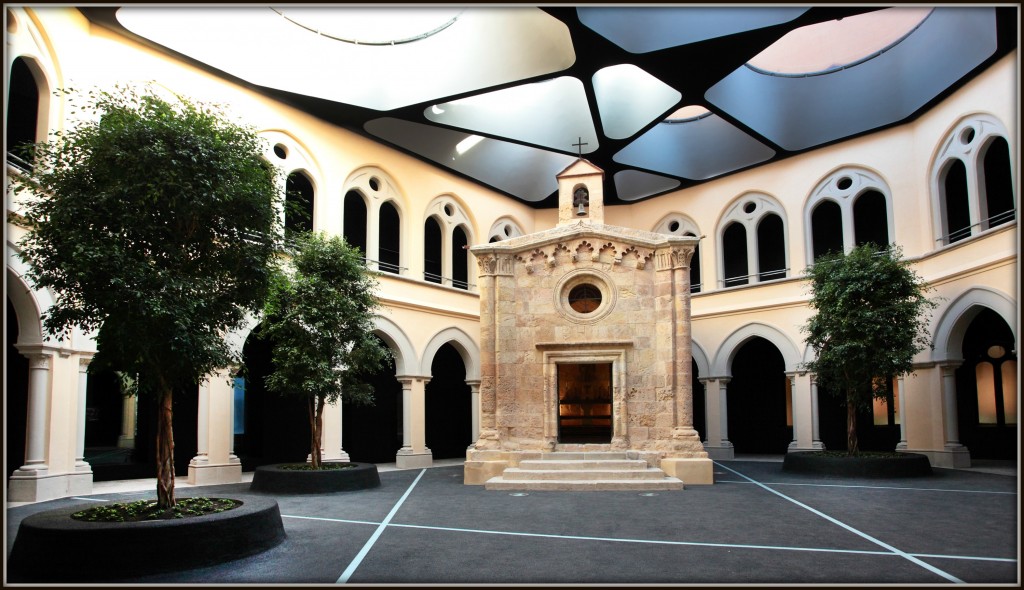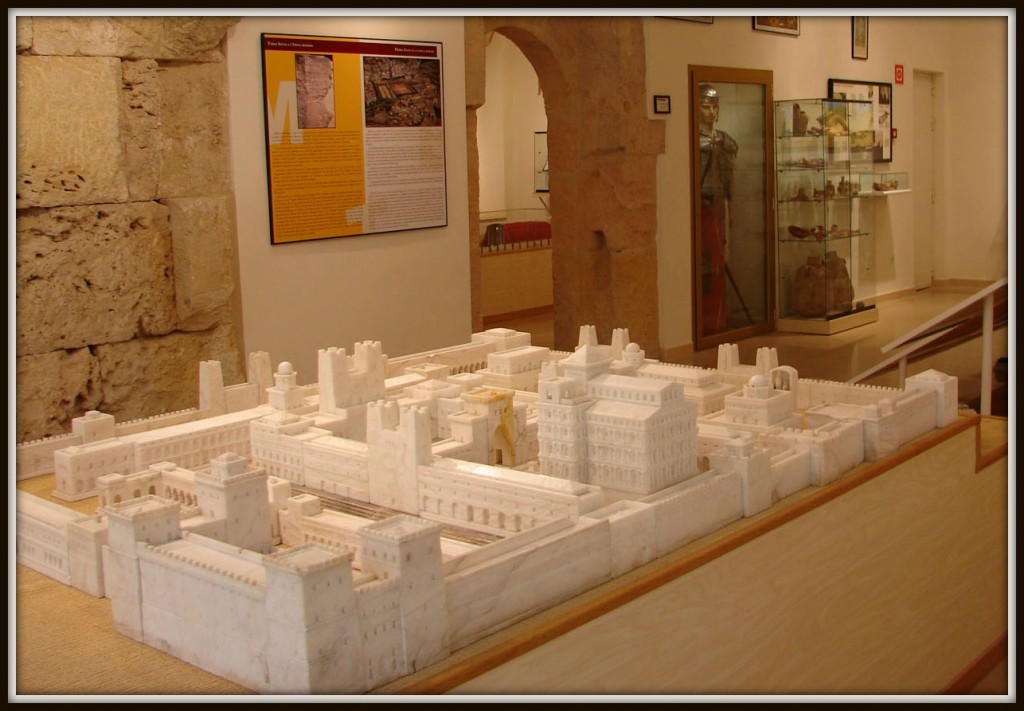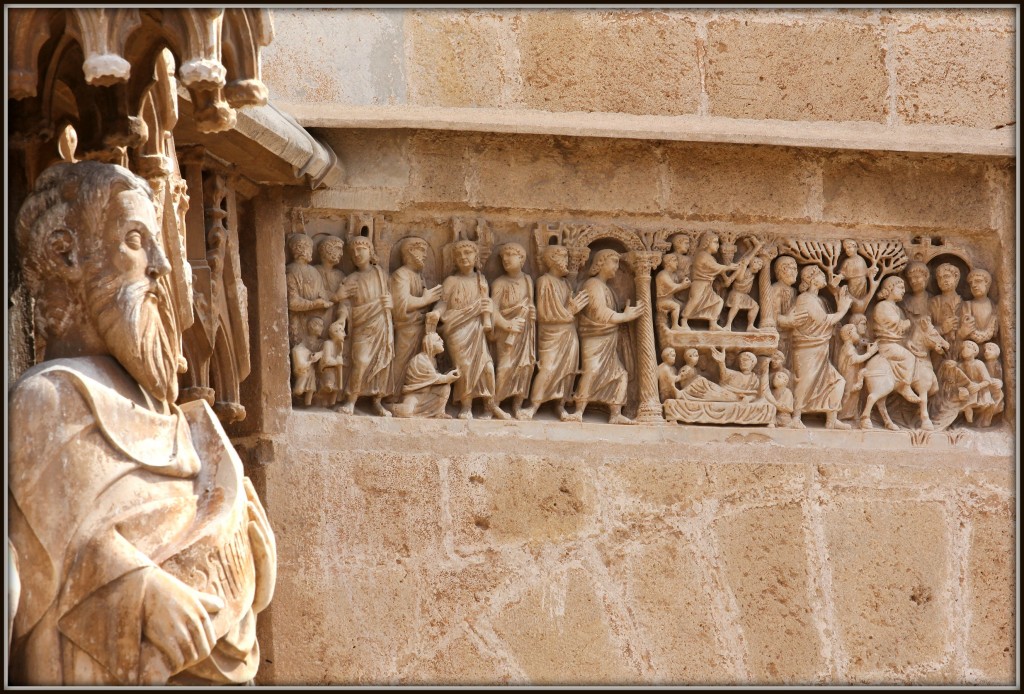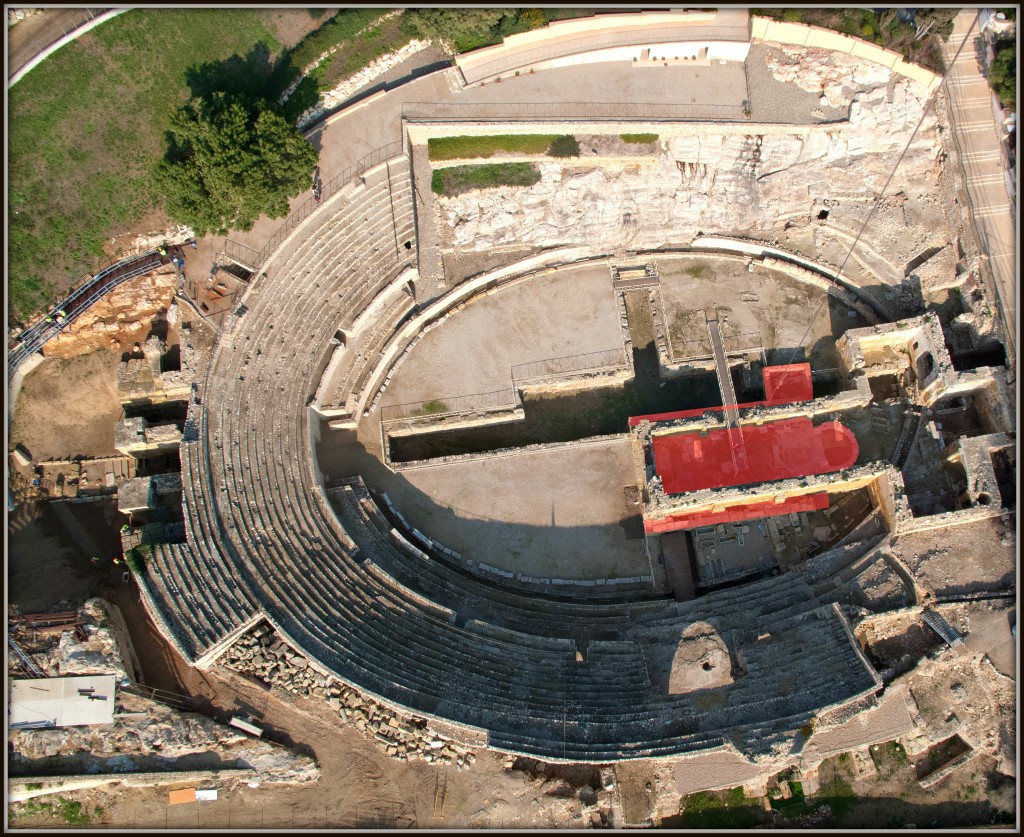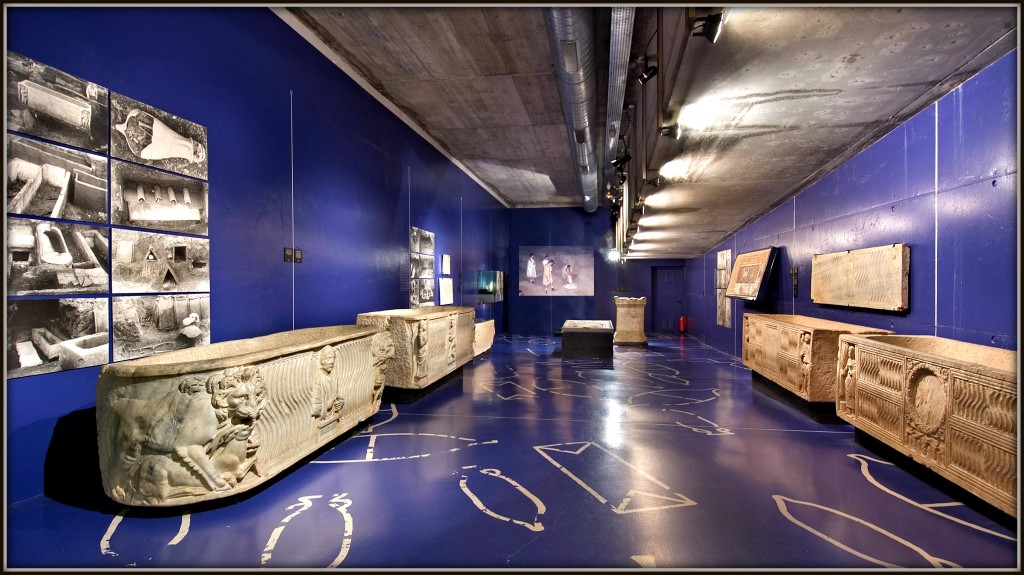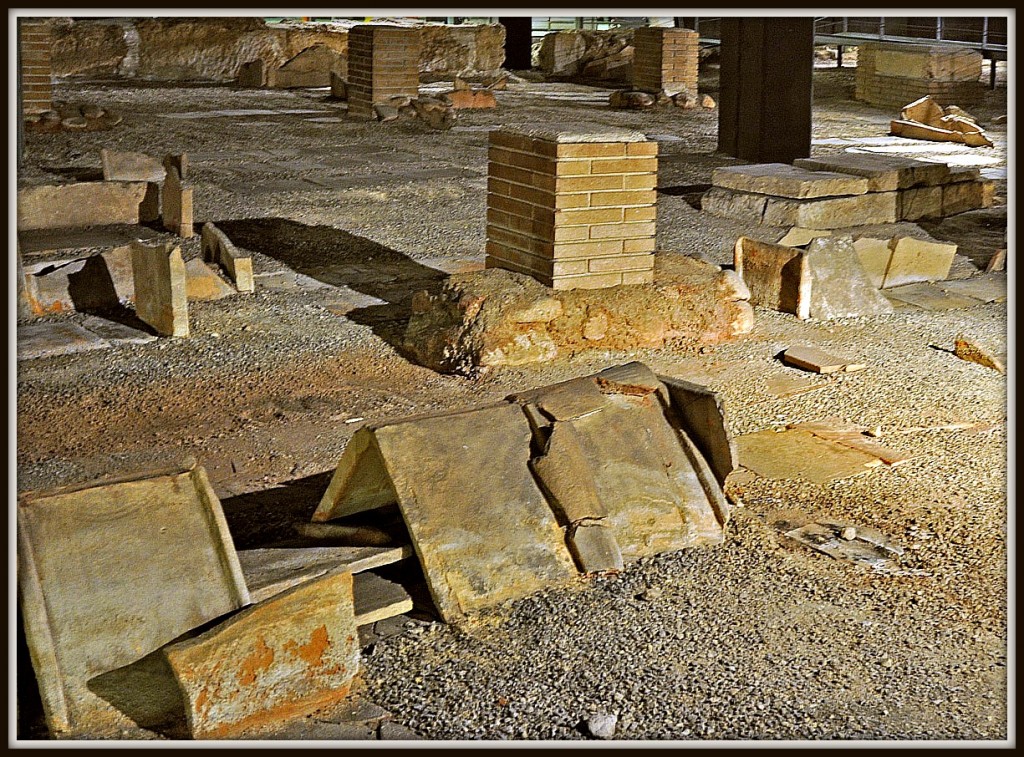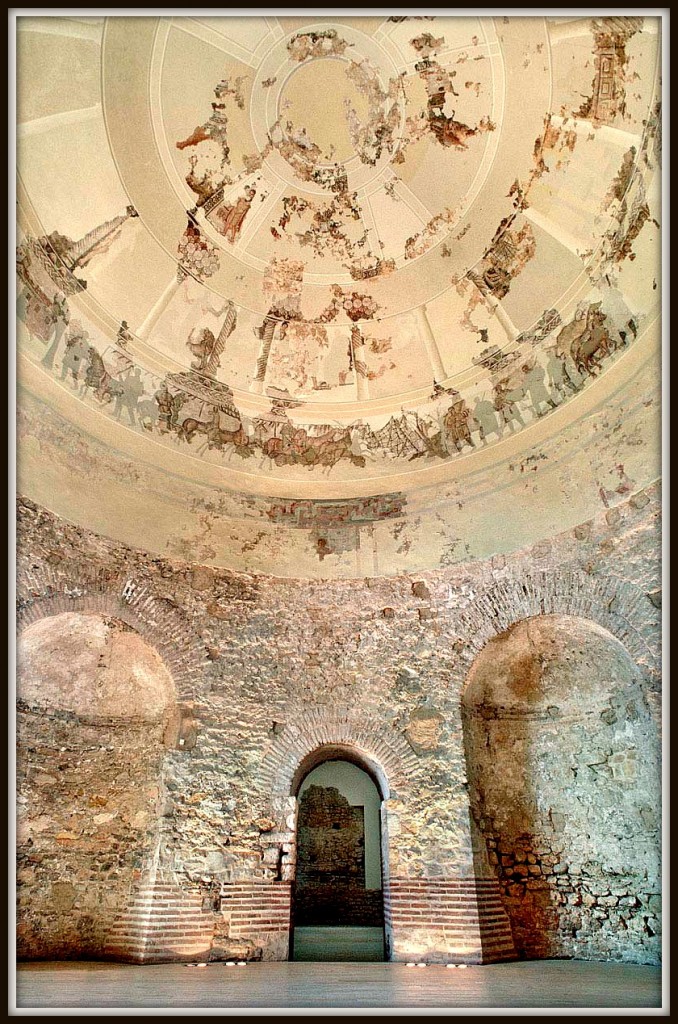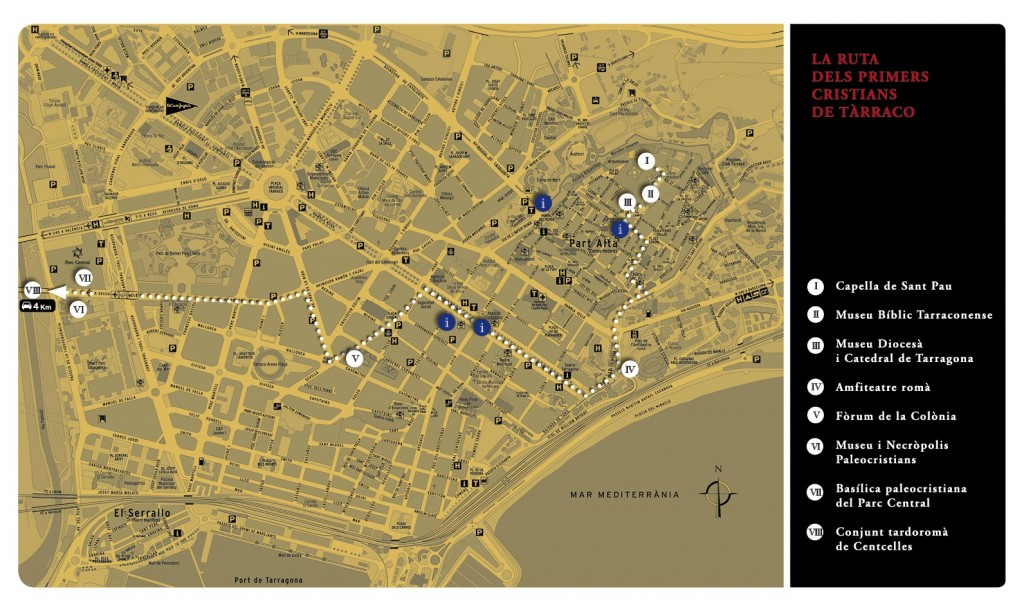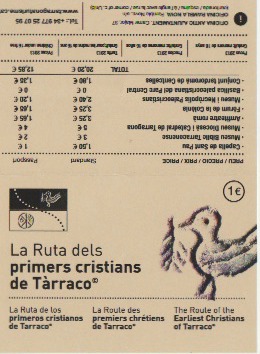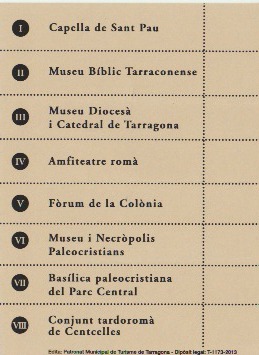Tarragona has presented this week The route of the early Christians of Tàrraco, a new itinerary designed to guide visitors along historical, archaeological and artistic spots, so that the process of Christianization in Tarragona, which takes us from the arrival of Christianity into the city thanks to the evangelization of Paul of Tarsus, according to tradition (1st century AD), up to the arab-berber incursion, in the beginning of the 8th century.
As we mentioned, tradition relates the arrival of Christianity with the missionary duties by Paul the apostle, despite the documented piece of news about Christianity being dated in the year 259 when the Tàrraco’s bishop, Fructuosus and his two deacons Augurius and Eulogius, were burned alive at the stake in the Amphitheatre by the Roman emperors Valerian and Gallienus.
The route of the early Christians of Tàrraco is no ordinary guided tour, but one that anyone can do on his own, at any given moment. The itinerary includes eight different spots (museum equipment or monuments) which are: Sant Paul’s Chapel (El seminari Tarragona Centre), the Cathedral and the the Diocesan Museum of Tarragona, the Biblical Museum of Tarragona, Tarragona’s Amphitheatre (Museum of History of Tarragona), the Forum of the Colony (Museum of History of Tarragona), the Early Christian Basilica in the Parc Central Store, the Early Christian Necropolis (National Archaeological Museum of Tarragona) and the Archaeological set in Centcelles (National Archaeological Museum of Tarragona). The early Christian archaeological heritage of Tarragona is, overall, the most important one in the Peninsula.
Everyone interested on following the track of the early Christians of Tàrraco can buy (for just 1€) a sort of passport which will be stamped at every visited spot, and which will also provide visitors with important discounts on the museums and monuments’ tickets.
1) Sant Paul’s Chapel, a small jewel hidden in a cloister
Even though the visitor is allowed to start the itinerary at any point, Andreu Muñoz, Museum‘s manager and one of the route’s author, recommends Sant Paul’s Chapel, located at the highest point of the acropolis, the current Seminari building (19th Century), as the perfect starting point. Visitors will find, in one of its cloisters, a small chapel built in the 13th century. Tradition points at this spot as the place where the preaching by Saint Paul the apostle took place, right on the rock on which the chapel was built. Andreu Muñoz recommends accessing the first floor where one can find some explanatory boards of the whole route, which provide all the information for a perfect start.
Carrer de Sant Pau, 4
Phone number: (0034) 977 247 190
Email: info@ctarraconense.cat
Website: www.ctarraconense.cat
2) Biblical Museum of Tarragona, a trip to the origins of the Judeo-Christian culture
It was created in 1930 and it still preserves an important collection of archaeological, literary, liturgical, artistic and didactical elements related to the biblical culture. Thanks to his historical and biblical culture perspective, it is described by Andreu Muñoz as “the holy grail of the Judeo-Christian culture in Tarragona and the best spot in order to understand the theological, symbolic, ritual and iconographical basis of the world of the early Christians of Tàrraco”.
Carrer de les Coques, 1-C
Phone number: (0034) 977 251 888
Email: museu.biblic@arquebisbattarragona.cat
Website: http://museu.biblic.arquebisbattarragona.cat
3) Diocesan Museum and the Cathedral, a spirituality and artistic fascination universe
The See in Tarragona occupies the space where, in the Roman time, the temple dedicated to its emperors was erected. The Cathedral has two singular elements: Saint Fructuosus chapel and the courtly remains of the apse’s rear. The Cathedral’s Roman remains recall the sacrum area of the imperial cult to the visitor which, as an integral part of the Provincial Forum, had to host Saint Fructuosus’ trial. At the same time, the Roman courtly area behind the apse was built in the Late-Roman period and most probably this is where the Visigoth Cathedral was erected. On the other hand, the Diocesan Museum also preserves archaeological elements from the early stages of Christianity, such as little liturgical bronze jar from the 7th century, once found in a tomb; and the superb Bethesda’s sarcophagus, from the early 5th century.
Pla de la Seu
Phone number: (0034) 977 22 69 35 / (0034) 977 23 86 85
Email: catedraltarragona@dna.es
Website: www.catedraldetarragona.com
4) Roman Amphitheatre, a basilica on the sand
As we were saying, this is the setting for the first piece of news we have about Christianity in Tàrraco: the martyrdom, on January 21 year 259, of the bishop Fructuosus and his two deacons Augurius and St. Eulogius, who were burned alive. Tarragona’s church built, between the 6th and 7th centuries, a basilica in memory of the martyrs, possibly in the very same place where the saints were sacrificed. On the top of this construction, in the 12th century, a new temple dedicated to Miracle’s Saint Mary was erected, as documented papal bull by Anastasius IV, dated in 1154.
Parc de l’Amfiteatre romà
Phone number: (0034) 977 24 25 79 / (0034) 977 24 22 20
Email: mht@tarragona.cat
Website: www.museutgn.com
5) 5) Forum of the Colony, the Tàrraco’s social and political life centre
We find ourselves now at the epicentre of what must have been Tàrraco’s social and political nerve centre. Andreu Muñoz tells us that “in case Paul the apostle had visited the city, according to tradition, this would have been the area where the first missioning process would have taken place”. In the medieval period, a church dedicated to Saint Fructuosus had been documented in this place, which survived until the 17th century. A pious tradition considered the house of Frutuosus to be set in this very same spot.
Carrer de Lleida
Phone number: (0034) 977 24 25 01 / (0034) 977 24 22 20
Email: mht@tarragona.cat
Website: www.museutgn.com
6) Museum and Necropolis, the witnesses of the early Christian culture
Andreu Muñoz believes the following three spots to be “the most exceptional of the route of the early Christians of Tàrraco”. Bishop Fructuosus and his two deacons Augurius and Eulogius were buried precisely in this area by the Christian community of Tàrraco. The spot got an especially interesting for the local Church, and believers were particularly willing to be near the martyrs’ reliquaries. In the late 4th or early 5th century, a great basilica with a baptistery was built in order to provide this service to the people. Muñoz also highlights the fact that both the Necropolis area and the permanent exhibit “are essential spots in order to get to understand the evolution of the martyrdom cult, the funerary customs and the epigraphic and artistic manifestations of the period”. “A journey across the city of the dead is nothing but a journey also across the city of the living”, he adds.
Avinguda de Ramón y Cajal, 84
Phone number: (0034) 977 21 11 75 / (0034) 977 23 62 09 / (0034) 977 22 15 15
Email: mnat@gencat.cat
Website: www.mnat.cat
7) Early Christian Basilica in Parc Central, primitive Christianity’s liturgical costumes
This is the only basilica still preserved of the Early Christian period. Dated in the first half of the 5th century, it is formed by three naves and a transept, with apse and counter-apse, oriented towards the east, and it is preceded by an atrium with a probable centre fountain. In the area of the basilica and the atrium gallery, 160 aligned burials have been found. The only complete epigraphic board found is of great importance, since it talks about a Blessed Thecla, one of Christ’s consecrated virgins, of Egyptian origin that died at the age of 77. The basilica of ‘Parc Central’ is the only example of Early Christian basilica architecture in Tarragona and a great way to get users in contact with primitive Christianity’s liturgical costumes and cult buildings.
Parc Central Store’s parking lot (Av. Vidal i Barraquer, 15-17)
Phone number: (0034) 977 22 87 97
Email: atencionalcliente@ccparccentral.com
8) 8) Late-Roman Set in Centcelles, Christian art through mosaics
“‘It is, without doubt, the cherry the cake, the culminant spot in the route’, states Andreu Muñoz. We are talking here about a Roman village’s remains in Constantí, by the river Francolí (Tulcis in the past). In the mid 4th or early 5th century, the village built an impressible centre floor plan building finished with a dome and decorated with a magnificent mosaic. Among the several scenes pictured (hunting, season figurations, enthroned characters…), we would highlight the biblical scenes about Adam and Eve, Jonas, the three Babylon Hebrews, Daniel the prophet, the Good Shepherd and the resurrection of Lazarus. Despite the still present debate about the building’s chronology and function, the magnificence of the project, the technique used and the iconography suggest that its developer would have been a high-class person with a rigid Christian faith. However, Centcelles still hides many mysteries, especially for what its ownership and functionality are concerned. Some investigators identify it as a huge mausoleum; others, as the Roman village’s enormous welcome hall; and some, as a mere place of worship. However, a new theory has added that the set was part of general Asteri‘s barracks, whose troops were established in Tàrraco in the year 420.
Outskirts of Constantí (4km away from Tarragona)
Phone number: (0034) 977 52 33 74 / (0034) 977 25 15 15 / (0034) 977 23 62 09
Email: mnat@gencat.cat
Website: www.mnat.cat
Text: Ivan Rodon (@irodon)
Translation: Artur Santos (@artur_1983 in Twitter)



